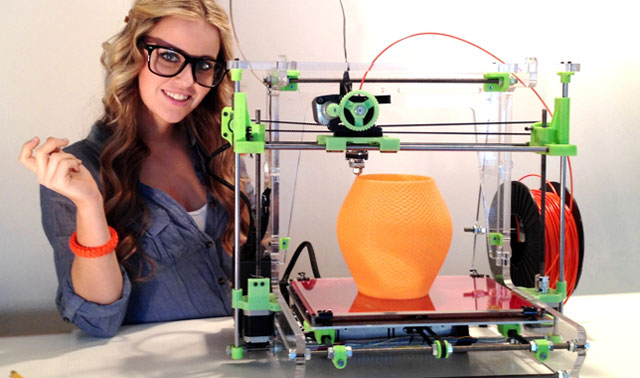
Sales of 3D printers, devices that allow users to create three-dimensional objects from scratch by adding successive layers of materials, are expected to surge in the next two or three years, new research from analyst firm Gartner claims.
Worldwide shipments of 3D printers costing less than US$100 000 each will grow by 49% in 2013, reaching 56 507 units, Gartner says in its first forecast of the market.
Rapid quality and performance innovations across all 3D printing technologies will drive demand from both business users and retail consumers.
Gartner expects shipments will increase further in 2014, growing by 75% to 98 065 units, followed by a near doubling of unit shipments in 2015.
In 2013, combined end-user spending on these devices will reach $412m, up by 43% from $288m in 2012. Enterprise or business spending will be more than $325m of the 2013 number, while the consumer segment will be $87m. In 2014, spending will increase by 62% to $669m, made up of enterprise spending of $536m and consumer spending of $133m.
“The 3D printer market has reached its inflection point,” says Pete Basiliere, research director at Gartner, in a statement.
In the next 18 months, Gartner expects that consumers will move from “being curious about the technology to finding reasons to justify purchases” as prices, applications and functionality become “more attractive”.
For business, current uses of 3D printing focus on one-off or small-run models for product design and industrial prototyping, jobs and fixtures used in manufacturing processes and mass customisation of finished goods. “As advances in 3D printers, scanners, design tools and materials reduce the cost and complexity of creating 3D printed items, the applications of [the] technology will continue to expand to include areas such as architecture, defence, medical products and jewellery design,” Basiliere says.
3D printer prices will decrease in the next several years due to “competitive pressures and higher shipment volumes, even after allowing for providers who will be offering devices with higher performance, functionality and quality that allow them to hold the line on pricing”, Gartner says.
However, in the consumer space, 3D printing will remain the pursuit of hobbyists until at least 2016, Basiliere says. “We expect that a compelling consumer application — something that can only be created at home on a 3D printer — will hit the scene by 2016,” he says. “This application, which will be the most compelling use case yet for consumer 3D printing, will arise from work done by makers and other enthusiasts who push the envelope of consumer 3D printing uses and enabled by manufacturers who develop ‘plug and play’ tools. — (c) 2013 NewsCentral Media




